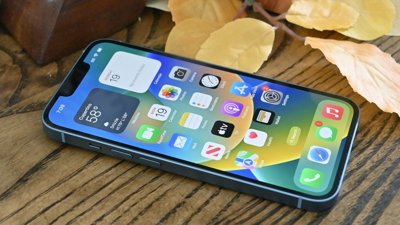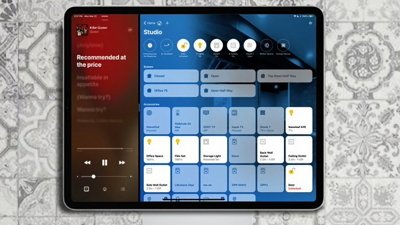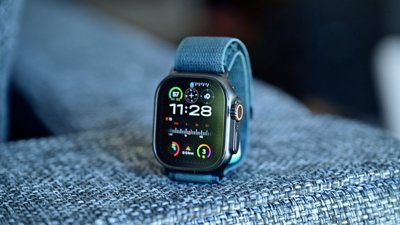New York Times technology columnist David Pogue this weekend delivered some additional details on Apple's new iPhone features, including dialing, synchronization, and web browsing.
Notably, the journalist pointed out that the mobile edition of Safari, once thought to be stripped of many of the media plugins necessary for more advanced websites, will likely be full featured. He cited an interview with Apple chief executive Steve Jobs conducted by the German magazine MacWelt that raises the possibility of JavaScript and Flash support, suggesting the Apple-made handset may either directly support Flash or else receive easy conversion of Flash videos into external formats.
"YouTube — of course. But you don't need Flash to show YouTube," Jobs said. "We could get [YouTube] to up their video resolution... by using H.264 instead of the old codec."
Pogue also noted that the iPhone's now-legendary "pinch" control for zooming photos will also apply to e-mail and web browsing, offering a complete view of a page or magnifying text for those with poor eyesight. "I could zoom in and out on an entire e-mail message: embedded photo, text, and all," he wrote.
However, the New York Times editor was quick to downplay some supposed features of the device, stating bluntly that the iPhone as shown at Macworld does not support speed dialing, live GPS positioning through its Google Maps tool, or wireless synchronization with a host computer through either Bluetooth or Wi-Fi.
Pogue nevertheless defends Apple, saying that he "could not agree more" with a reader who observed that Apple was not likely to let the iPhone's capabilities remain static in the run-up to its June launch.
Read below for a complete list of more definite information revealed in Pogue's article:
- JavaScript is "built into the phone," according to Jobs, but a full Java engine would only be a "heavyweight ball and chain" no one uses.
- Jobs on the subject of Flash: "you might see that."
- The company has not decided on whether or not a user's existing music library can be used for ringtones.
- Mac OS X on the iPhone is stripped down. The interface has been redesigned for the phone as well.
- The Calendar tool will allow new events and schedules to be added from the phone itself, rather than requiring a sync.
- The settings menu is functional and includes an airplane mode (which disables the cellular radio while maintaining other features such as music).
- The pinch motion works with both e-mail and web browsing, controlling zoom.
- No speed dial links exist at present, but may change by the official launch.
- As demonstrated, the phone has no GPS integration and cannot pinpoint its owner's location in Google Maps.
- The display surface is polycarbonate plastic, but is "substantially improved" over the material used for iPods and should resist easy scratching. Brightness is very high.
- Input on the screen must be made using direct finger contact, and does not work with gloves or a stylus.
- Any set of earphones with a standard headphone plug will work without adapters.
- The company plans to add 3G wireless (in the form of HSDPA) to the iPhone once access is more widespread.
- Apple may allow rotating the phone for entering text in a more comfortable landscape mode, but has not committed to the feature yet.
Published Sunday 5:00pm ET as part of Monday's early morning edition.
 Slash Lane
Slash Lane
-m.jpg)






 Stephen Silver
Stephen Silver
 Charles Martin
Charles Martin


 William Gallagher
William Gallagher
 Malcolm Owen
Malcolm Owen

 Christine McKee
Christine McKee









86 Comments
Isn't the favorites list Jobs demonstrated basically like a quick dial list? Maybe not quite as easy as pressing and holding 1 for instance, but it seems like that's their solutions for it.
I think the keyboard would be easier in landscape, but the disadvantage is a loss of screen to see what you're typing.
I would consider this (landscape text entry) an absolute must.
As demonstrated, the phone has no GPS integration and cannot pinpoint its owner's location in Google Maps.
This is the thing I hope they change the most.
Tuesday's big announcement by Steve, along with the breathless responses in the media pro and con alike by journalists and self-annointed pundits made me wonder how much we REALLY know about what we THINK we know of the new iPhone. I'm almost tempted to make an X-Y graph depicting a bell curve chart of the hype-hysteria-FUD cycle that has taken place in the past week. Whipped up to a frenzy in the days preceding the announcement, the public was almost orgasmic in the minutes and hours following. A day later, we witnessed a counterattack of FUD pushed by hidden PR forces of opposing camps, be it vehement anti-Apple haters (Dvorak, Kantor, USA Today et al), telcos and phone makers not in on the deal whose hegemony is threatened, and some company from the Seattle area. We've seen message boards, articles and blogs littered with lies, half-truths, gross inaccuracies and more.
The first victim has been truth.
Slowly, thanks to people like David Pogue, some truth is beginning to emerge, and the wave is beginning to return to a more normal level. If we look back in a few weeks or months, we'll see that a lot of silly behavior ensued.
This reminds me of looking at dream cars at an auto show. These cars of the future are a bit of fantasy, and not a little be of market research. For years, auto makers have used dream cars to gauge public reaction before committing resources to the final product. And given the length of time before the iPhone is introduced in finished form, I would not be surprised to see differences between the unfinished version that Steve demoed and the finished product, based on marketplace response.
Don't forget: this is a VERSION 1.0 product, for all this infers. Some of you will be disappointed that it's not nuclear powered and can't be used while deep sea diving. Too bad. In fact, please get over yourselves. In time, we'll see improvements to subsequent versions, likely at lower prices. What's important here is that the iPhone represents a huge step forward. And no amount of FUD or spittle from those who hate Apple and Apple fans can change that.
So strap in. It's going to be a great ride.
No HSDPA support is simply lame. I won't be getting the phone before it's added.
Here in Ireland, we have almost 90% HSDPA coverage already. I've also found that recently, I am getting UMTS/HSDPA coverage almost anywhere I travel in Europe. "Until it's more widespread" is simply not true.